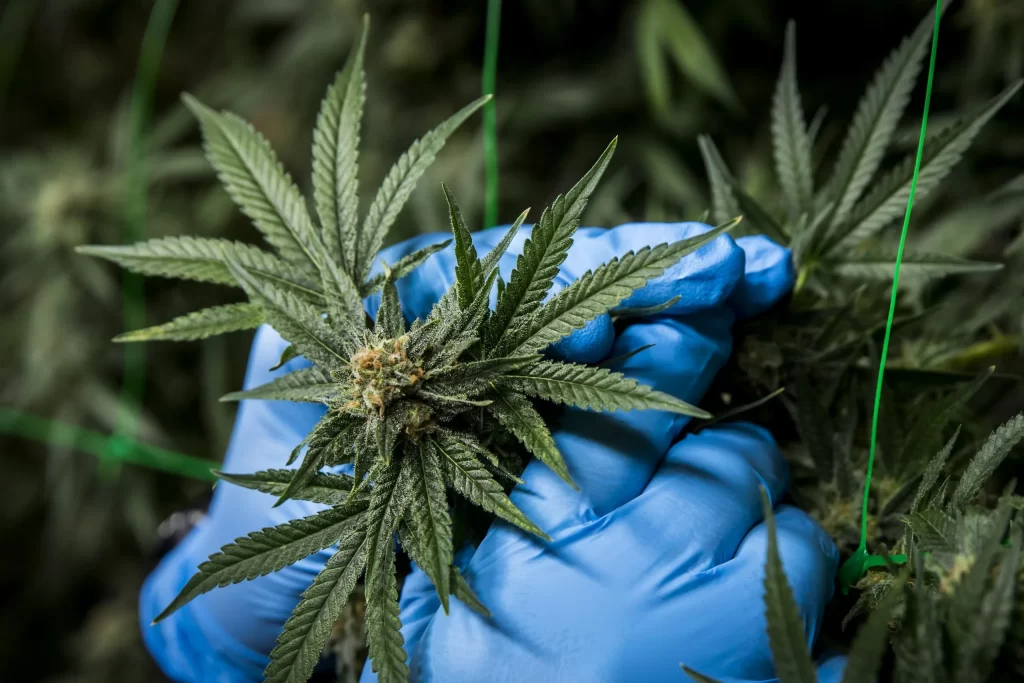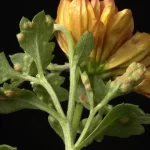Hop Latent Viroid
Introduction
Hop Latent Viroid (HLVd or HpLVd) is a significant concern for growers, particularly those cultivating hops and cannabis. This pathogen can have a considerable economic impact on the industry, leading to reduced yield, quality, and plant longevity[1-2]. A comprehensive economic study has summarized the economic impacts of diseases on specialty crops, including those caused by HLVd [3]. This blog post will discuss the symptoms, life cycle and infection stages, growth conditions, prevention and control methods, and some recommendations for growers.
As a grower, it is vital to understand the difference between a virus and a viroid. Here are some key points to keep in mind:
Virus
- An infectious particle that can infect a wide range of living organisms, including animals and humans.
- It is larger and more complex than a viroid.
- It can cause a wide range of diseases in their hosts.
Viroid
- An infectious particle that infects only higher plants.
- It is smaller and simpler than a virus.
- It does not cause diseases in humans or animals.
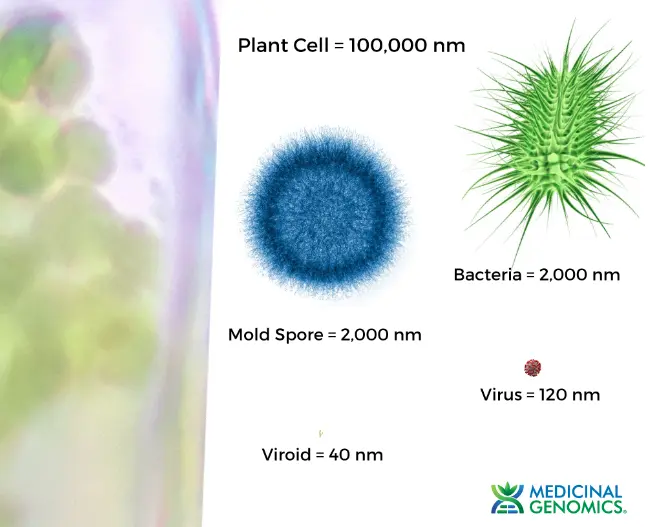
The economic impact of HLVd is substantial, as it can lead to a decrease in both the α-bitter acid and terpene content of hop cones, which affects their economic value [4]. Furthermore, HLVd has been associated with “dudding” or “duds” disease in cannabis, which has become widespread in cannabis-growing facilities across North America [4].
Table: Hosts and Susceptibility
|
Hosts |
Susceptibility |
|
Hops |
High |
|
Cannabis |
High |
We provide great overviews of many agricultural microorganisms. Subscribe to stay updated!
Symptoms of Hop Latent Viroid
HLVd-infected plants may remain asymptomatic, making it difficult to detect the presence of the pathogen [2]. However, some symptoms may include [5-6]:
- Stunted growth: Cannabis plants with HLVd infections commonly exhibit stunted growth
- Under-developed trichomes: Physical symptoms of HLVd can be hard to detect but may include under-developed trichomes
- Irregular branching: HLVd can remain latent in a cannabis plant for long periods before exhibiting signs such as irregular branching
- Decreased trichome production: HLVd can remain latent in a cannabis plant for long periods before exhibiting signs such as reduced trichome production
- Chlorosis of the leaves: HLVd can remain latent in a cannabis plant for long periods before exhibiting signs such as chlorosis of the leaves
- Malformation of the leaves: HLVd infection can result in malformation of the leaves
In the case of cannabis, HLVd-positive plants may contain roughly half the THC of healthy plants [5].
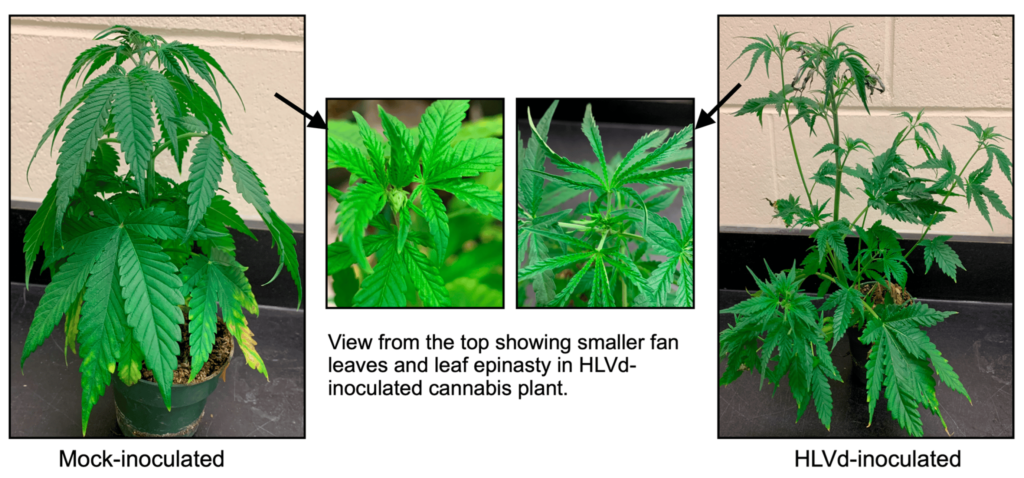
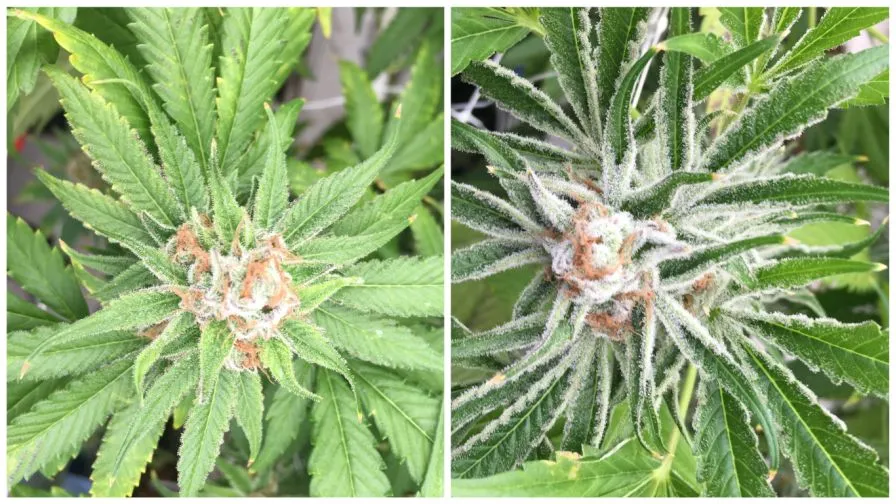
Life Cycle and Infection Stages
The life cycle of HLVd has yet to be well understood, but it is known that the pathogen can be transmitted through mechanical means, such as during propagation, pruning, and crowning [6]. HLVd can remain latent in a cannabis plant for long periods before exhibiting signs such as irregular branching, decreased trichome production, chlorosis of the leaves, and stunted development. Studies have shown that viroids generally can remain infectious for longer than 24 hours on most common surfaces and up to 7 weeks in water [7].
The pathogen secretes enzymes and toxins to facilitate infection, penetrating plant cell membranes. After successful infection, the fungus grows within the plant, causing the characteristic disease symptoms. It then produces more spores, initiating a new infection cycle [6-7].
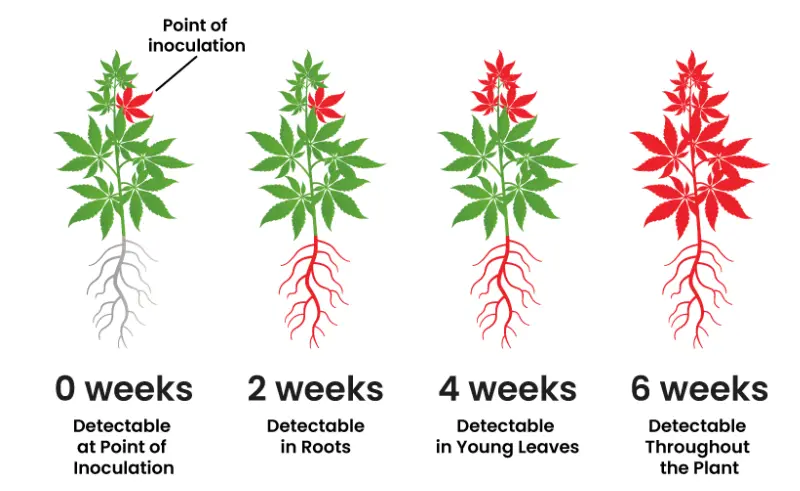
Growth Conditions for Alternaria solani
HLVd can thrive in various growth conditions, as it has been detected in hop and cannabis plants grown in different regions and climates [1-2]. The pathogen can accumulate in plants over time, particularly in perennial crops like hops [1].
Methods of Prevention and Control
Prevention is the best means of protection against HLVd. Greenhouse growers should adopt strict bio-security measures, clean and sanitize all tools between plants, and ensure employees frequently wash their hands or change gloves after handling each plant [5]. Early detection of HLVd is crucial for effective management, and testing for the presence of the viroid is recommended [8].
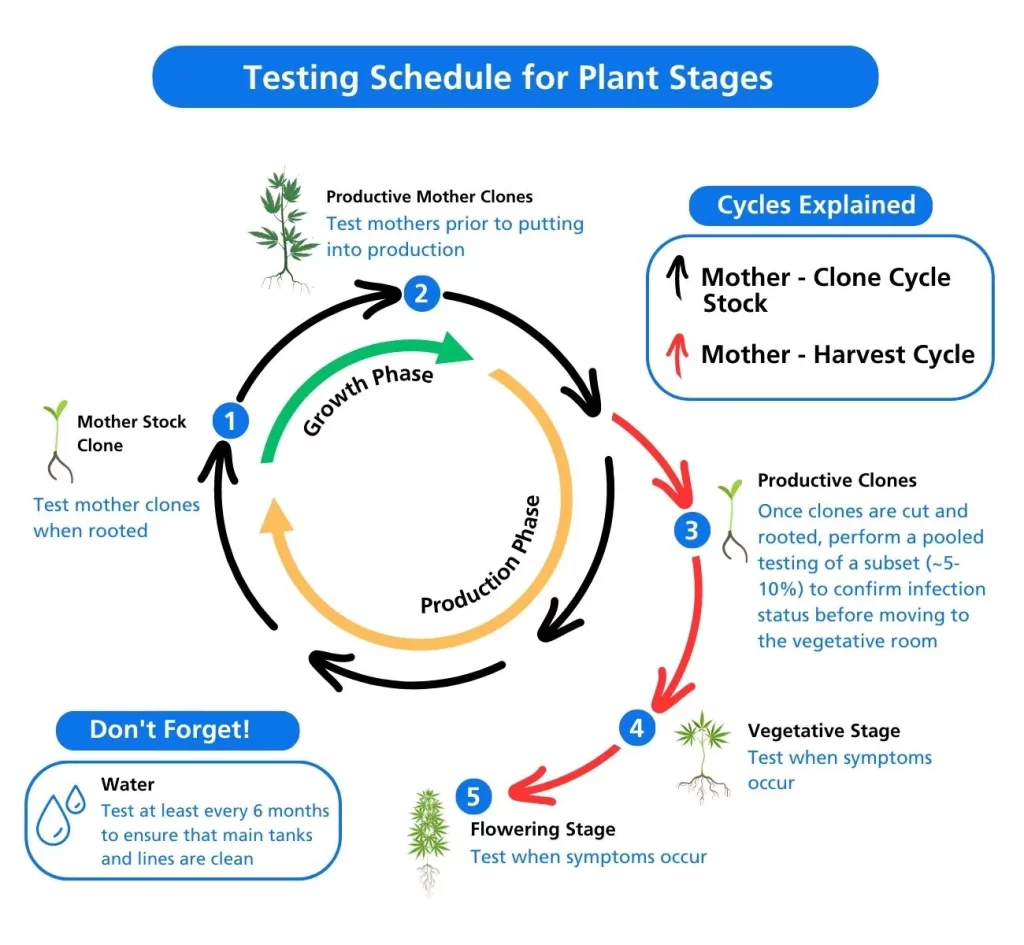
Conclusion
Hop Latent Viroid poses a significant threat to greenhouse growers, particularly those cultivating hops and cannabis. By understanding the symptoms, life cycle, and growth conditions of HLVd, as well as implementing effective prevention and control measures, greenhouse growers can minimize the economic impact of this pathogen and maintain the health and productivity of their crops.
Disclaimer
The information we present in Pathogen Profile is based on collating published peer-reviewed scientific literature, and sources we think are reliable. This is by no means an exhaustive review of pathogens. Pathogen Profile gives a small glimpse of what is known about pathogens. We encourage growers to do more research on the pathogens concerning their crops and hydroponic systems. We are not plant pathologists; thus, the information presented in the Pathogen Profile should not be used as professional advice to treat pathogens or operate your system.
References
-
Li, Y. (2012). Early Blight of Tomato. New Haven, CT. Retrieved from https://portal.ct.gov/-/media/CAES/DOCUMENTS/Publications/Fact_Sheets/Plant_Pathology_and_Ecology/EARLYBLIGHTOFTOMATO032912pdf.pdf
-
University of Massachusetts Amherst. (2013). Solanaceous, Early Blight. UMass Extension Vegetable Program. Retrieved from https://ag.umass.edu/vegetable/fact-sheets/solanaceous-early-blight
-
Hudelson, B. (2012). Early Blight. Wisconsin Horticulture Extension. Retrieved from https://hort.extension.wisc.edu/articles/early-blight/
-
Utah State University EXTENSION. (2020). Early Blight. Utah Vegetable Production & Pest Management Guide. Retrieved from https://extension.usu.edu/vegetableguide/tomato-pepper-eggplant/early-blight
-
OMAFRA. (2009). EARLY BLIGHT. Ontario Crop IPM. Retrieved from http://www.omafra.gov.on.ca/IPM/english/tomatoes/diseases-and-disorders/early-blight.html#advanced
-
Kemmitt, G. (2002). Early Blight of Potato and Tomato. The Plant Health Instructor. Retrieved from https://www.apsnet.org/edcenter/disandpath/fungalasco/pdlessons/Pages/PotatoTomato.aspx
-
Adhikari, P., Oh, Y., & Panthee, D. R. (2017). Current status of early blight resistance in tomato: An update. International Journal of Molecular Sciences, 18(10). doi: 10.3390/ijms18102019
![]()
David Santos is the COO/CMO of Healthy Hydroponics InnoTech


